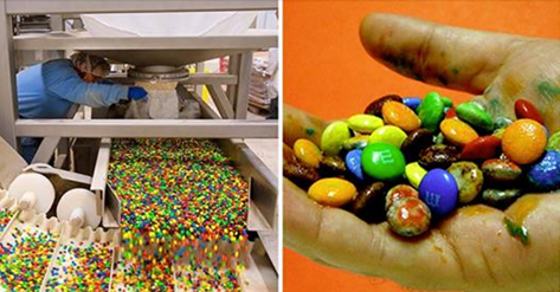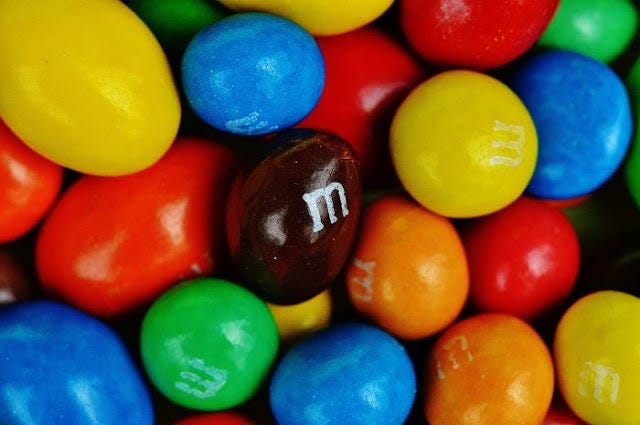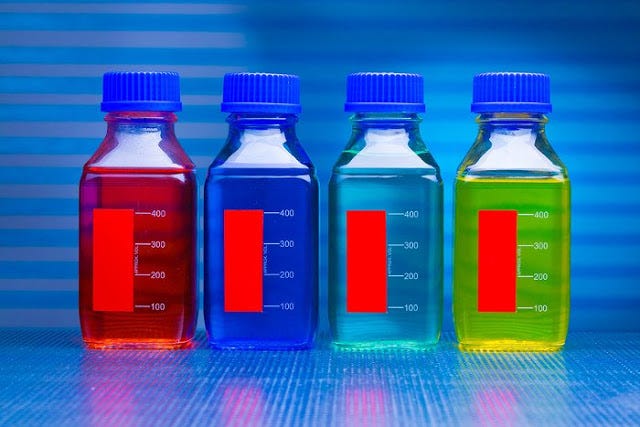
“They melt in your mouth, not in your hand!” That may be true of M&M’s, but it’s time to reconsider whether these little chocolatey snacks are worth the risk. Many people have already gotten involved, signing a petition urging the makers of M&M’s to use their $27.4 million profit to make their product safe again.

Of course, no one expects any candy or chocolate bar to have very high ratings on the health scale, but there’s more to the story when it comes to this specific brand. In fact, M&M’s have had a long history of using questionable ingredients in their chocolate.
Back in 1976, Red Dye #2 was banned from the use of food after being discovered to be carcinogenic. This was the key food color used to in M&M’s colorful snacks. But, when the dye was reintroduced into food products in 1983, M&M jumped right back into its use, much to the dismay of their consumers.
Unfortunately, the company ignored requests to switch to a safer alternative (considering many other options are available). They have also not responded to CSPI’s recommendation to include warning labels on all food products containing artificial coloring such as Red Dye #2.

It’s not just one ingredient that has some health-aware citizens wringing their hands, there are actually several ingredients found in M&M candies that would be better left out.
This chemical is commonly used throughout the (Western) food industry to prolong the shelf life of food products. As you may have guessed, it’s based on soybeans, which, at this point are 93% genetically modified. Not only have GMO foods never successfully proven to be safe for consumption in the long run, but some companies, like Monsanto, use GMO technology to allow their crops to withstand an obscene soaking of pesticides and other chemicals without dying off. Unfortunately, that means that we the consumer end up ingesting the remnants of these chemicals.
In addition to the issue of genetic modification and toxic chemicals, soy has been linked to an increased risk of breast cancer, fertility, and reproductive problems, and possibly cognitive and behavioral issues. It’s much better to snack on organic ingredients, and fresh, whenever possible.
Apart from Red Dye #2, M&M’s contain:
- Blue Dye #1: linked to malignant tumor growth in rat studies as well as low blood pressure problems, hives, asthma, and allergic reactions
- Blue Dye #2: linked to tumor growth, abnormal cell development, and hyperactivity in children
- Red Dye #40: linked to cancer, DNA damage, swelling around the mouth, hives, and hyperactivity
- Yellow Dye #5: a common food allergy, as well as potential links to cancer and behavioral problems
- Yellow Dye #6: linked to diarrhea, vomiting, migraines, allergic reactions, hyperactivity and cancer
- The truth is, even if M&M replaces all of their artificial dyes and colors with natural ones that haven’t been associated with serious health risks, the main ingredients alone have adverse effects on your body. Milk and refined sugar (without which, you can’t have milk chocolate) are well-known to cause inflammation in your body. While some have more severe reactions to dairy products, including bloating and gas, both of these ingredients take a toll on your digestive tract in the long-term, and can lead to complications such as leaky gut, depression, and even cancer.
- On the other hand, organic chocolate (referred to as cacao by many) will actually have the opposite effect. Rich in antioxidants, it will help your body to fight the damage caused by inflammation in your body, is proven to improve your mood (way better than refined sugar ever will), and still tastes delicious. If you’re interested in learning how to eat the right kind of chocolate check out these recipes: Chocolate Pudding, Chocomoli Smoothie, and HomeMade Nutella!
Credits: source


